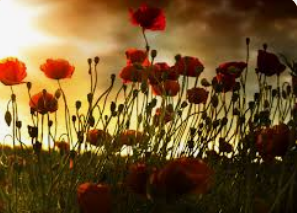One of the main reasons for the lack of progress on the federal Indigenous file is the lack of united support among First Nations for real change. Sadly, our non-Indigenous political leaders do not talk about this, former Prime Minister Pierre Trudeau being one exception. If the feds mustered enough courage to urge more Indigenous consensus, perhaps more pressure could be placed on Indigenous leaders to get their act together on behalf of the people – the Canadians – they represent.
The failure to come together with a practical plan for a better future can be explained by a study of Indigenous history both before and after European contact. Confused and without a clear direction, we have stumbled through recent decades oblivious – and often misled – as to why we are where we are. Pundits and activists blame colonialism for many of today’s problems, and there are good reasons for doing so. But the origin of one key obstacle to progress goes back much further, to the relationships that once existed between the many tribes and nations of the time.
Judging by the feuding among today’s Indigenous leadership, it would appear that old grudges die hard. One example was played out for us recently as we watched the Wet’suwet’en chiefs, elected and hereditary, battle for authority and federal recognition.
Bob Joseph, a Kwakwaka’wakw hereditary chief in British Columbia, puts it better than I when he says, “They can get along really well, or they can fight like the Hatfields and McCoys.”
And given the nature of our current government, it is not surprising that the squeakiest wheel has been getting the grease.
But enough of that.
Let’s begin by learning a little bit about only one group, the Iron Confederacy, which resided and operated in today’s western Canada and northern United States. The confederacy’s members included Cree, Ojibwe, Stoney, Metis, and Iroquois. These groups spoke as many as six different languages. (Another possible reason for confusion is that some of these groups at one time or another were known by other or additional names; for example, Saulteaux, Nakota, Dakota, Lakota, Pwat, Assiniboine.)
The Assiniboine (aka Hohe/Sioux/Stone Sioux), pushed out of Minnesota by the Ojibwe and once closely associated with the Yanktonai Dakota people, were branded as rebels by the Sioux and, recorded history tells us, were living in the Assiniboine River Valley of Saskatchewan and Manitoba by 1806. Many centuries passed in that region before that, and the activities of Indigenous people there are as yet unknown to this writer.
The Cree: other Cree names include Naskapi, Montagnais, Atikamekw, East Cree, Swampy Cree, Woods Cree, Plains Cree. The Cree pushed other tribes out of the lands they had been occupying, tribes like the Beaver (Dane-zaa) people of the area around Lesser Slave Lake. They assisted the Piegan (Blackfoot), who were at war with the Snake Indians (aka Northern Paiute, Bannock, and Shoshone) around 1723. Later, the Piegan again called for help from the Cree and Assiniboine in their fight with the Snakes, who by this time had horses, believed to be introduced to American Indians by the Spanish. Later still, according to explorer of the time Jacques Legardeur de Saint-Pierre, by 1750 the Cree and Assiniboine had raided the Hyactljlini, Brochets, and Gros Ventres.
If you’ve read this far, you must agree that, at least in Western Canada, unscrambling the territorial and political history of Indigenous peoples can be bewildering. But it does help explain how it is that today First Nations claim to be individual nations in (almost) every sense of the word, and want to be dealt with accordingly by the federal government. They considered themselves nations in the past, made treaties (like nations do), made war, made peace, did business.
Today, financed by Canadian taxpayers, the outdated and harmful treaties still exist. The war of words remains in full swing, and it’s escalating. Chiefs are having a tough time making peace, either with the federal government, or with each other.
The word “almost” is key here; no other nations are financed by another nation to the extent we see with First Nations in Canada.
And business? How can any nation do business with the rest of the world when it is governed by a regime as restrictive as the Indian Act? So, with some notable successful exceptions, not much business is being done either, nor jobs created.
There has been more strife since “reconciliation” began with Stephen Harper’s apology for residential schools in 2008 than there was for decades before. It doesn’t help at all that the current Prime Minister encourages impossible nation to nation relationships at every opportunity. Such rhetoric raises hopes and expectations in ordinary Indigenous people. When the hopes are dashed again and again, bitterness increases again and again, and the evidence of our country’s greatest failure gets worse each year.
As the abbreviated history above illustrates, over the years, generations and centuries, many fundamental changes occurred in the lives of many tribes and nations. Now, for the sake of a better future for everyone, the reality of life in Canada in 2020 cries out for fundamental recognition.
First Nations are part of the Canadian fabric. They were here first. They were nations. That history – and it is history – should be respected. But today they are Canadians, and have been since the beginning of Canada.
Diversity in Canada can, and should, flourish. It should be celebrated, but Canada is the nation now, the only nation. We ought to be one people now.
James C. McCrae, Brandon resident and former attorney general of Manitoba, with notes from Sudbury lawyer Peter Best, author of There is no Difference.
P.S. The more things don’t change, the more they don’t change. Indigenous relationships changed fundamentally many times over the course of their history. Yet since 1876 (Indian Act), and before that, indigenous people have been living in a terrible rut. JCM
Photo credit https://elements.envato.com/user/jacoblund



